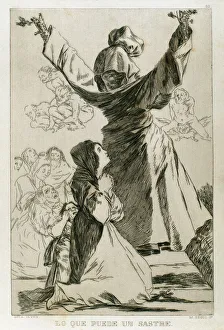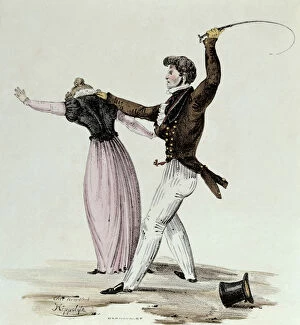Ironical Collection
"Ironical: A Journey Through Satirical Art and Historical Paradoxes" Step into the world of irony and satire as we explore the captivating works of Francisco de Goya
All Professionally Made to Order for Quick Shipping
"Ironical: A Journey Through Satirical Art and Historical Paradoxes" Step into the world of irony and satire as we explore the captivating works of Francisco de Goya, a Spanish painter and printmaker known for his series "Los Caprichos. " From 1746 to 1828, Goya's art challenged societal norms with its biting wit and thought-provoking imagery. In this collection, we encounter a color lithograph titled "Modern Philanthropy, " depicting the British burning Washington D. C. In 1814 while simultaneously encouraging slaves to escape to their ships. The irony lies in the stark contrast between philanthropic intentions and destructive actions. Moving forward, we stumble upon another color lithograph called "The Art of Making Oneself Loved by One's Wife. " Here, humor intertwines with social commentary as Goya playfully explores marital dynamics. With a touch of irony, he reminds us that even love can be an art form requiring skillful manipulation. As our journey continues, we come across a delightful lithograph named "Nice Boy. " This whimsical piece captures the innocence of childhood but leaves us questioning what lies beneath that charming facade. Is there something more profound hidden behind those innocent eyes? Next up is a cover illustration from Le Rire dated November 2nd, 1918 - "The Great Peace Bazaar. " In this colorful lithograph, satire takes center stage as it portrays nations coming together after World War I. However, one cannot help but wonder if true peace can be achieved through mere commercial transactions. Our exploration then takes us back in time to 1893 when new coinage designs were being considered. These intricate lithographs present four different designs that challenge traditional notions of currency aesthetics. Irony arises from contemplating how these innovative ideas might have clashed with conservative views at the time. Continuing on our path through history's ironies, we encounter an allegorical cartoon depicting the British Empire strangling the world.








